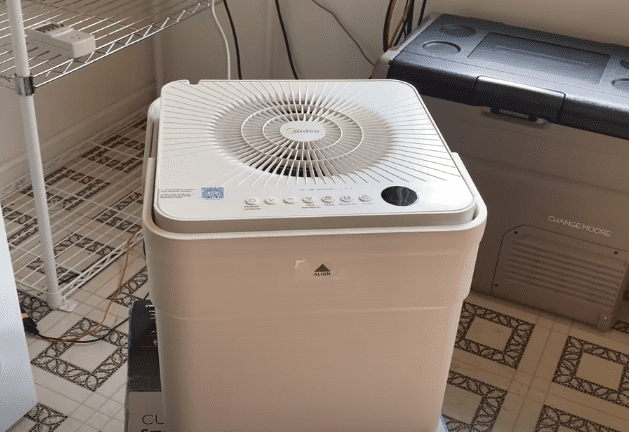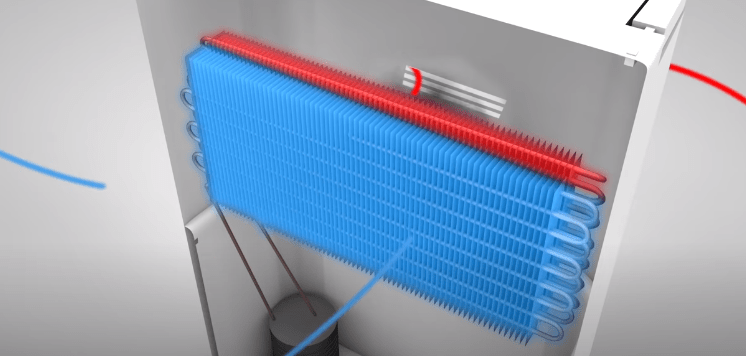Imagine waking up to the gentle hum of your trusted dehumidifier, a steadfast companion on your quest for healthier indoor air quality. In the pursuit of a more comfortable and health-conscious home, you have an interest.
I will unravel the mysteries and address the challenges that come with these unassuming yet essential household devices. As a fellow enthusiast for solutions, I’m here to explore the tips and issues you may encounter in the world of dehumidifiers.
I am Mannan Wasif, your guide on this journey. Driven by a passion for creating healthier and cozier living spaces, I’ve dedicated myself to comprehending the intricacies of dehumidifiers. Over time, I’ve encountered the same questions and uncertainties that may have crossed your mind. Questions such as, “How much water should a dehumidifier collect in a day?” or “Is my dehumidifier operating as efficiently as it should?”
Together, we’ll delve into these queries and more, ensuring you acquire the knowledge necessary to optimize your dehumidifier’s performance.
Now that we’ve established our connection and you’ve become acquainted with me, let’s delve into the core of our discussion. In this blog post, we aim to demystify the daily water collection goal for your dehumidifier.
Whether you’re an experienced dehumidifier user or just embarking on this journey, understanding the ideal water collection rate is essential. We’ll explore the factors influencing it, recognize signs indicating when your dehumidifier may need attention, and provide practical tips to maintain fresh and comfortable indoor air quality.
So, let’s embark on this enlightening journey together, equipping you with the knowledge to master your dehumidifier’s performance.
How much water should a dehumidifier collect in a day?

The amount of water a dehumidifier can collect in a day can vary significantly. Generally, dehumidifiers can extract anywhere from ten to one hundred pints of water daily. However, this range depends on several factors:
- Fan Speed: The rate at which the fan operates can influence water collection.
- Water Collector Size: The dehumidifier’s water collector tank size also affects daily water extraction.
- Room Temperature: The room’s temperature can impact a dehumidifier’s performance, with lower temperatures often resulting in reduced moisture removal.
- Machine Power Level: The power level of your dehumidifier plays a role in determining its water collection capacity.
- Moisture Content of the Air: The amount of moisture in the air directly influences a dehumidifier’s ability to absorb and collect water.
- Relative Humidity Levels: The prevailing relative humidity in your space also contributes to how much moisture the dehumidifier can extract.
Electric dehumidifiers typically store extracted water in tanks, and it’s worth noting that the dehumidifier’s size and model can impact its collection capacity. Larger units designed for more extensive areas may consume more electricity, affecting operational costs.
Small dehumidifiers are used in tropical regions to reduce indoor humidity. Thermoelectric dehumidifiers, known for their eco-friendliness and quiet operation, face efficiency issues. This study explores a Photo-Thermoelectric Dehumidifier (PVTE-D) powered by a photovoltaic system. Experimental and numerical analysis shows that higher input power from a PV panel enhances water condensate collection, peaking at 1,852.3 mL/hr in May with 6A and 5V input. Optimal performance is achieved at low airflow rates, offering insights for improved water condensation capacity.
Unlike electric dehumidifiers, desiccant dehumidifiers don’t collect water in tanks but instead absorb moisture. They require periodic recharging to maintain humidity levels.
Apart from assessing the quantity of water collected and the dehumidifier’s operation duration, other signs of excess humidity in your space include the presence of mold on ceilings or wall corners and excessive window condensation. Keeping an eye on these indicators will help you determine when to empty the tank more frequently.
Why Do Dehumidifiers Collect Water?

Dehumidifiers serve a vital purpose by extracting water from the air, effectively reducing and maintaining lower humidity levels in a given area. This process ensures that water doesn’t disperse back into the air, helping to prevent issues like mold growth and allergen proliferation.
While humidifiers disperse water into the air, dehumidifiers, often referred to as desiccant dehumidifiers, work differently. They condense air by passing it over cold coils, leading to the accumulation of water in a tank as the condensation drips into it.
A full water tank in your dehumidifier indicates that it is functioning correctly, effectively reducing the room’s humidity level. Have you ever wondered about the relative humidity in your room?
How does a dehumidifier work?

A dehumidifier lowers the humidity level in a room or space by extracting moisture from the air. This action not only prevents issues like mold and mildew but also contributes to improved air quality, reducing the risk of allergies, asthma, and other respiratory problems.
As air vapor condenses, it forms water droplets, which are collected in a water tank, ready for manual removal or continuous drainage through a hose.
The daily amount of water your dehumidifier should collect depends on three key factors: the moisture content in the air, the dehumidifier’s tank capacity, and its power.
Why is my Dehumidifier Not Collecting Water?
The first step is to determine if the room temperature is above 18 °C. If it is, you will not be able to collect much humidity from the air. Dehumidifiers work by circulating refrigerant, which ensures moisture is removed from the air, so if it’s above that temperature, it’s likely the compressor is malfunctioning.
Additionally, a malfunctioning capacitor or fan motor can be the culprit. The capacitor works alongside the compressor, and when one fails, the other may follow suit. If the fan motor is restricted due to dust and lint buildup, it can impact performance, sometimes necessitating professional assistance.
Dehumidifier Maintenance to Keep It Running Efficiently and Lasting Longer
To keep your dehumidifier performing at its best and extending its lifespan, regular maintenance is crucial. Neglecting maintenance can lead to reduced efficiency, increased energy consumption, and even potential breakdowns. Here are some essential maintenance tips to follow:
1) Clean the Water Tank
- Empty and clean the water tank regularly to prevent mold and bacteria growth.
- Use a mild detergent and warm water to clean the tank thoroughly.
- Rinse it well and let it air dry before reinserting it into the dehumidifier.
2) Clean the Humidifier Coils
- Dust and debris can accumulate on the coils over time, reducing efficiency.
- Turn off and unplug the dehumidifier before cleaning the coils.
- Gently brush or vacuum the coils to remove dirt and dust buildup.
- Be careful not to damage the coils during cleaning.
3) Replace or Clean the Air Filter
- The air filter plays a critical role in maintaining air quality and dehumidifier efficiency.
- Check the filter regularly (consult your user manual for guidance) and clean or replace it as needed.
- Some dehumidifiers have washable filters, while others require replacement filters.
- A clogged filter can strain the dehumidifier’s motor, increasing energy consumption.
4) Inspect the Drainage System
- If your dehumidifier has a continuous drainage option, ensure the hose is securely connected and free of obstructions.
- Regularly check the drainage path for any blockages or kinks that may impede water flow.
5) Keep the Surrounding Area Clean
- Dust and debris in the vicinity of the dehumidifier can be drawn into the unit, affecting its performance.
- Maintain a clean environment around the dehumidifier to prevent particles from entering the intake.
6) Check for Leaks
- Inspect the dehumidifier and its connections for any signs of leaks.
- Leaks can indicate a problem with the unit and should be addressed promptly to avoid damage and inefficiency.
7) Monitor Humidity Levels
- Regularly check the humidity levels in your space to ensure that the dehumidifier is effectively maintaining the desired humidity range.
- Adjust the settings if necessary to achieve optimal comfort and humidity levels.
8) Schedule Periodic Professional Maintenance
- Consider scheduling annual or bi-annual professional maintenance for your dehumidifier, especially if it’s an integral part of your indoor climate control.
- Professional technicians can perform a thorough inspection, clean internal components, and address any emerging issues.
Conclusion
Always consider your dehumidifier’s capacity when determining daily water collection expectations. Refer to the user’s manual for insights into parameters like humidity levels and seasonal temperature variations.
Additionally, it’s crucial to understand when and how to use your dehumidifier for optimal humidity control and recognize signs of malfunction if it fails to perform as expected.

He is a mechanical engineer & our expert team member with over four years of experience who provides comprehensive and informative guides on various home improvement topics. From DIY projects to professional installations, he strives to give readers the knowledge and tools they need to make informed decisions and successfully complete their home improvement projects.
His goal is to empower homeowners to create the home of their dreams, while also increasing the value and functionality of their property. Whether you’re a first-time homeowner or a seasoned renovator, he has something for everyone.
